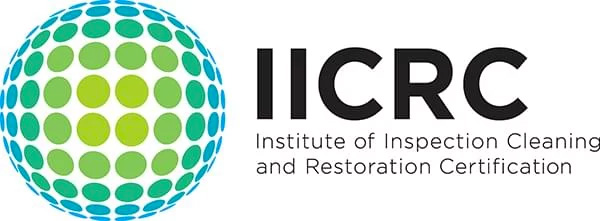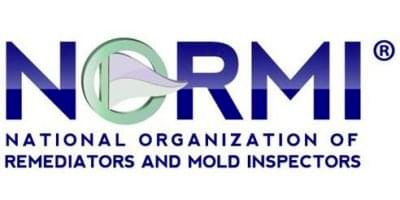How to Prevent Mold in your Kitchen
It isn’t surprising to find mold in the kitchen. This is because the kitchen provides all the ingredients that mold requires to grow. That is moisture, food source, and heat.
Preventing mold in your kitchen is very important. Why? Because kitchen mold has a higher chance of contaminating food, which can lead to serious health problems and illnesses.
Luckily, preventing mold in the kitchen is rather easy. It only takes a few preventative actions to make sure that your kitchen is safe.

Common Causes of Kitchen Mold
Understanding the causes of mold in your kitchen will help you know how best to prevent it from happening to you. The following are common causes of mold in the kitchen:
- Produce: without quick disposal, rotten fruits and potatoes make it easy for fungal growth. The proper disposal of them is a necessity.
- Cutting Boards: Did you know that fungi easily grow on cutting boards? Make sure to clean it properly with dish soap and hot water as soon as you are done using it. You can also try rinsing it with a cup of vinegar to disinfect it.
- Fridge-Related Mold: Mold growing in a refrigerator can be dangerous. Such molds ruin food and can cause negative health effects ranging from allergic reactions to food-sickness.
- Garbage Disposal: Is your kitchen garbage disposal clean? If not, rotting food will lead to mold growth. Food can easily become trapped in small crevices within the garbage disposal. Pouring 3 to 4 cups of vinegar with baking soda down the garbage disposal weekly can help prevent this. Even one cup of vinegar down the sink/drain can help get rid of unwanted developments.
- Dampness and Elevated Humidity: Mold thrives where conditions are favorable, and they are right at home in the kitchen. The sink and drain contribute greatly, requiring regular cleaning.
Creating a Mold Resistant Kitchen

Creating a mold-free kitchen doesn’t have to be difficult. You only need to find out what is causing it, and how to stop it.
⦁ Clean your kitchen regularly.
Whether the source is dust and dirt or rotten food, mold loves organic materials. And it will grow in any place, visible or out of sight.
Though you can’t always prevent food from dropping on the floor, you can certainly prevent mold from growing by cleaning your kitchen regularly. This includes tricky areas such as the sink and drain. The sink and drain can be overlooked due to their consistent water contact, but they must be addressed. Ideally, you should clean everything, top to bottom, once every month.
If you notice any water spots or food, clean it up immediately before you forget. It only takes a day for mold to form a colony. Even a small amount of water can cause a problem.
⦁ Throw away spoiled food.
It’s not unusual to simply overlook the food we keep in the fridge. That’s why it is crucial to check the bottom drawer of your fridge regularly. This will help ensure that no moldy food is left over. The proper disposal of these foods is important.
Spoiled vegetables and fruit are a breeding ground for mold. They must be placed in the garbage disposal quickly. It’s for this reason that cleaning your kitchen daily is necessary. If you notice that you often throw away veggies or fruit, find out why and you will be able to save some extra money in the process.
3. Run your garbage disposal and empty your trash can daily.
By now you know very well the results of rotten food and moisture with the garbage disposal. Mold grows pretty fast, even with small food particles in garbage disposals. According to the Centers for Disease Control, mold can start to grow in as little as 24 hours.
That’s why it’s important to take care of garbage disposal daily to prevent mold growth. Pouring baking soda and vinegar down your garbage disposal monthly can also help rid bacteria. While using the sink and pouring water down the drain helps, water is not enough. A cup of baking soda and vinegar will not only clean your garbage disposal, but the garbage disposal smells will be reduced.
You should also keep your trash can clean by washing it weekly with a detergent. Using trash bags can also ensure that it stays clean for longer periods at a time.
⦁ Wash dishes daily.
Piled up dishes in the sink go hand in hand with a mold colony. This is because mold thrives in dirty and moist or humid environments. In addition, both the rotting food and moisture will invite more ‘guests’ than just mold. Pouring water over dishes in the sink will not be enough. That’s not even considering the state of your drain!
When doing the dishes, you want to clean the wooden ones with dish soap immediately after use. At the same time, make sure that every piece is properly dried prior to putting it into the cabinet. Make sure to use hot water rather than cold water for the most effective result.
⦁ Clean appliances after use.
Microwaves, coffee pots, and blenders are easy to wipe and wash. Many people mistakenly think that radiation from the microwave kills mold spores. It doesn’t! Mold can still comfortably grow while inside your microwave.
The main problem with appliances is that they are usually closed, covered or sealed when not in operation. This blocks airflow and traps mold spores inside. Any water or lingering moisture will be a problem.
To sum up, always clean appliances after use and make sure they are properly dried prior to putting them away.
⦁ Clean the kitchen cabinets and storage spaces.
Mold can often be found in cabinets and other storage spaces. So, pay close attention to these areas prior to putting the dishware back. Also, make sure that the dishes are completely dry first.
Degrease your cabinets and inspect your storage spaces for mold. If you notice anything moldy or spoiled, throw it away.
⦁ Periodically check for leaks.
Leaking pipes, no matter how big or small, can cause a multitude of problems, including the development of mold. The drain is a tricky area. It’s always good to perform routine plumbing checks to make sure that there are no leaks. Or, if there are leaks in the drain, to take care of them immediately.
If you have a dishwashing machine, it is important to clean it regularly as well.
⦁ Turn the stove fan on when cooking.
Steam resulting from food preparation is often the cause of high levels of humidity in the kitchen. Water from cooking and boiling can be responsible for kitchen mold because of the environment it creates.
Each time you cook something on the stove, make sure the windows are open. Or if you have kitchen vents, make sure to turn them on to avoid any mold problems in the near future.
⦁ Avoid carpets and rugs in the kitchen.
Carpets and rugs tend to absorb and hold a lot of moisture and bacteria. Mold loves these types of conditions. Even with regular cleaning, the warmth and dampness provides the perfect breeding ground for mold.
For this reason, it’s not a good idea to keep carpets and rugs in the kitchen.
Keeping mold out of your kitchen is, needless to say, very important. It’ll contribute to an overall clean and pleasant space for the preparation of food as well as for entertaining and socializing.


